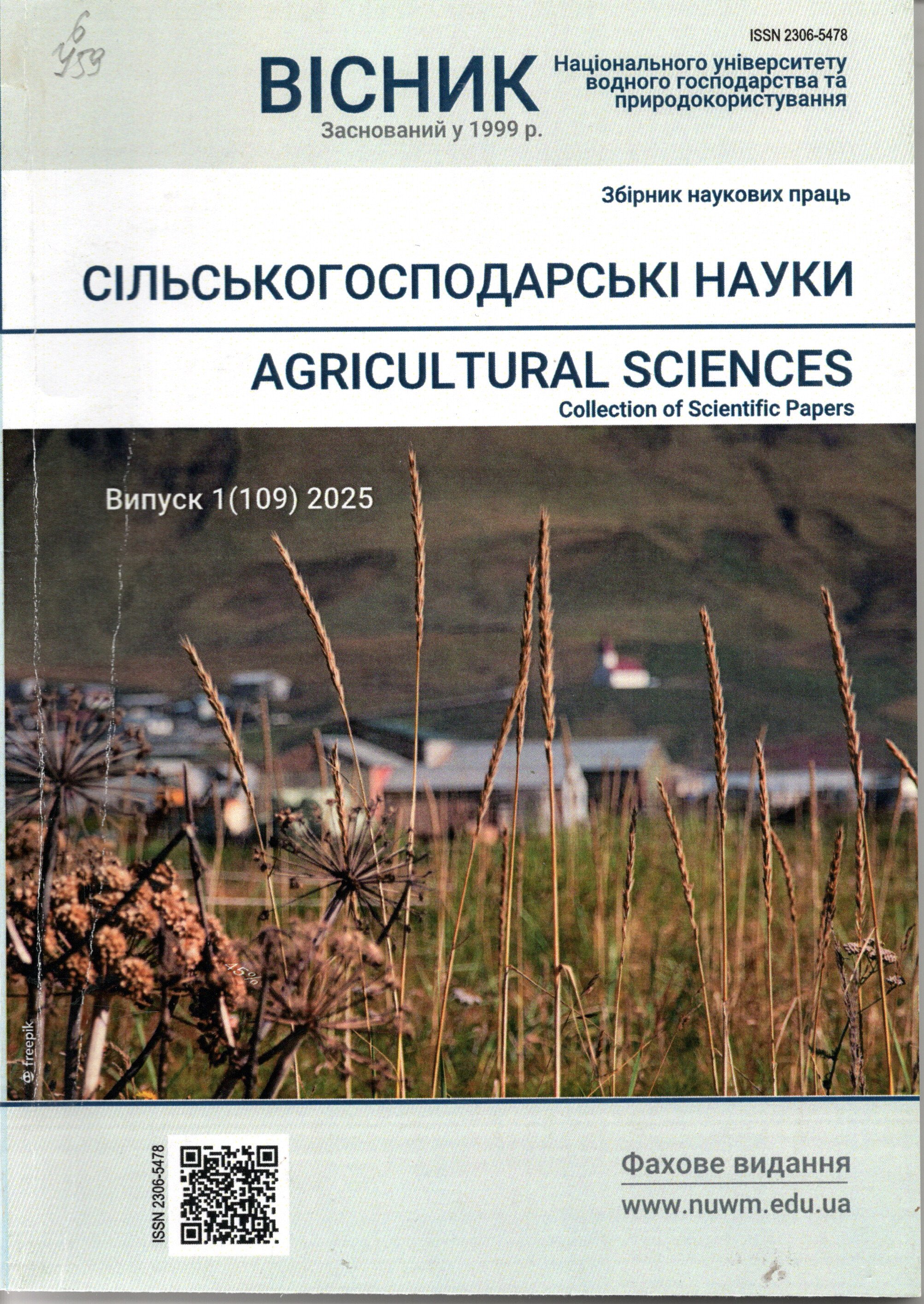THE EFFECT OF STORAGE METHODS ON THE CONTENT OF CHLOROPHYLLS AND CAROTENOIDS IN THE LEAVES OF VEGETABLE PLANTS
DOI:
https://doi.org/10.31713/vs120251Keywords:
chlorophylls, carotenoids, leafy vegetable plants, storage, freezingAbstract
The article presents the results of a study on the content of chlorophylls (a, b, a+b) and carotenoids in green plants under different storage methods: fresh, frozen, and dried. The most popular plants were selected as research objects: garden parsley, celery, dill, onion, mint, and arugula. The analysis was conducted using a spectrophotometric method with an 80% acetone solution for pigment extraction. The study results indicate that the storage method significantly affects the content of biologically active substances in plants. In most cases, freezing leads to a decrease in chlorophyll and carotenoid levels but allows for partial preservation compared to prolonged fresh storage. Drying, in turn, ensures relatively high pigment retention, especially in parsley, where their content remains nearly unchanged. This suggests that drying is an effective method for preserving chlorophylls and carotenoids in certain types of greens. The analysis showed that the highest chlorophyll levels in the fresh state were recorded in parsley, highlighting its high nutritional value and importance in the human diet. In the frozen state, celery retained the most pigments, confirming its resistance to this storage method. Carotenoids in the fresh state were best preserved in mint and dill, which may be an important factor when choosing these plants for fresh consumption. When frozen, the highest carotenoid content was retained in celery and arugula, making these plants promising for long-term storage in freezers. The obtained results have practical significance for the food industry and households, as they help determine the optimal storage methods for green plants to maintain their nutritional value and biologically active compounds.Downloads
Published
2025-11-06
Issue
Section
Articles

